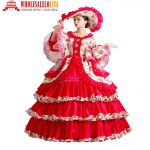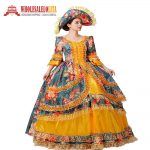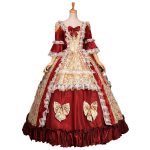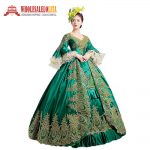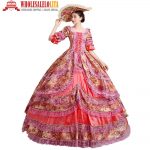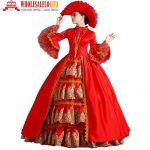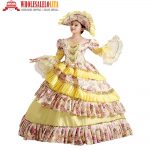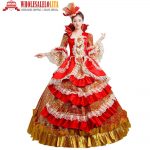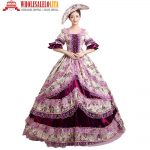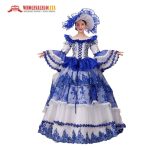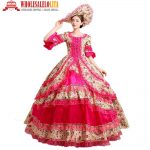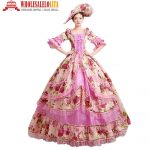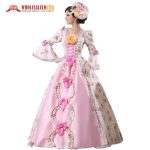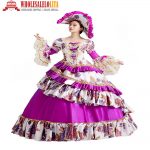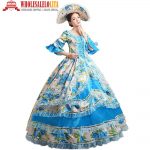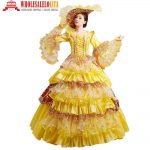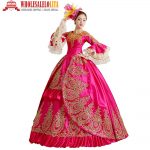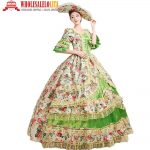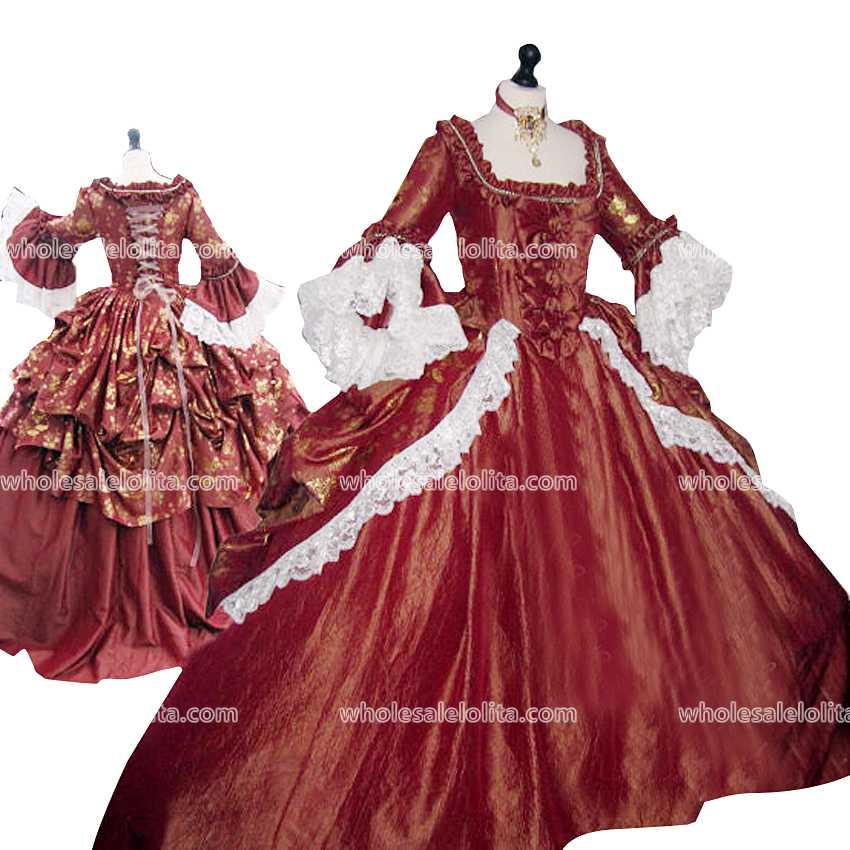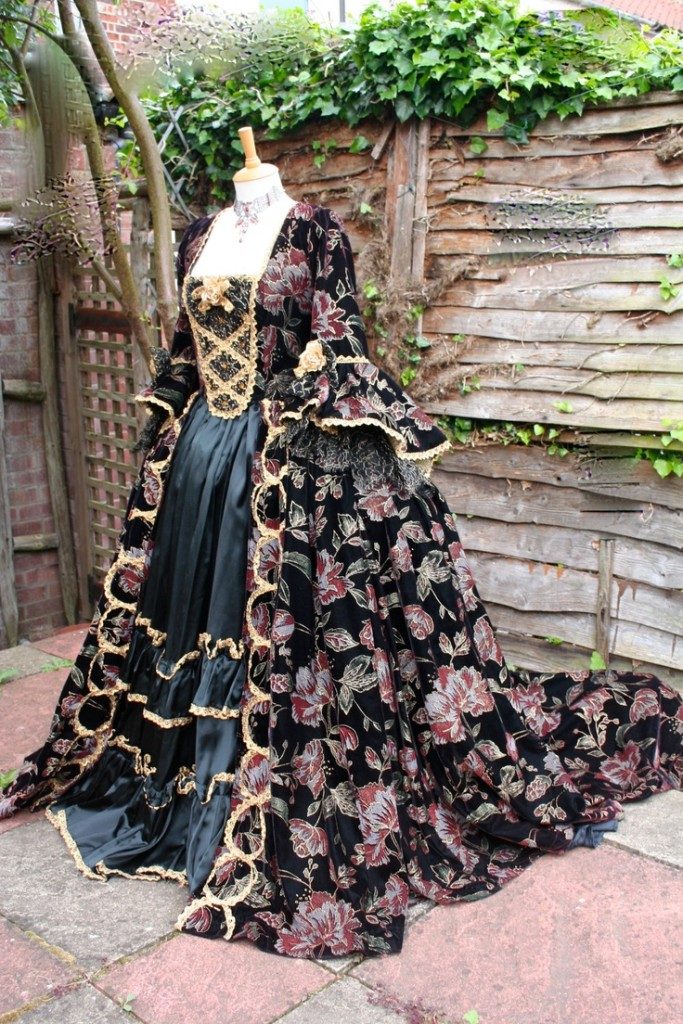A Tapestry of Timeless Elegance: Celebrating the Artistry of Historical Costuming
In the realm of historical costuming, where every stitch whispers stories of bygone eras and every silhouette becomes a portal to another century, there exists a rare alchemy between craftsmanship and wearability. My recent encounter with an exquisite Georgian satin ballgown—a Marie Antoinette-inspired masterpiece from a brand I shall henceforth deem The Timeweavers—has left me awestruck, not merely by its beauty, but by its profound dialogue between past and present. Though this particular gown did not become my personal Cinderella slipper, it unveiled itself as a chameleon of adaptability, a canvas awaiting the right collaborator.
The Alchemy of Authenticity
Upon unboxing the gown, I was greeted by sumptuous satin that rippled like liquid moonlight, its pearl-encrusted bodice echoing the rococo whimsy of Versailles. The meticulous hand-pleating along the hemline and the precision of the boning structure spoke of artisans who treat historical accuracy as sacred geometry. As someone who has curated costumes for community theater productions—where “close enough” often suffices—I recognized immediately that The Timeweavers operates on another plane entirely. Their creations are not costumes but wearable archives, threaded with reverence for the past.
Yet herein lay the paradox: Authenticity demands specificity. My body—a compact rectangle with a torso better suited to Tudor doublets than Georgian grandeur—found itself at odds with the gown’s architectural proportions. The waistline conspired against my shorter midsection; the cascading panniers seemed to chuckle at my modern pragmatism. But to mistake this as a flaw would be to misunderstand the very essence of historical design. These garments were born in an age when tailoring was an intimate negotiation between wearer and wardrobe, and The Timeweavers honors that tradition by crafting pieces ripe for customization.
A Gift of Grace: When Letting Go Becomes an Act of Beauty
Reluctant though I was to part with this sartorial sonnet, I gifted it to a fellow history enthusiast—a statuesque muse whose proportions mirrored the gown’s original blueprint. Watching her transform into a living Fragonard painting, the satin sighing in harmonious accord with her movements, was revelatory. The gown wanted to be adjusted; it craved collaboration. With strategic tucks and a masterful redistribution of ruffles (a project for which I lacked both time and patience), she and her tailor coaxed the garment into a second life.
This experience crystallized a truth: The Timeweavers does not sell garments—it offers partnerships. Their designs are conceived with the understanding that historical clothing, much like history itself, is not static. The hidden lacing panels, the convertible necklines, the modular underskirts—these are love letters to adaptability. For reenactors and theater troupes alike, such features are nothing short of revolutionary. How many hours have I spent cobbling together “close enough” Regency spencers or Elizabethan farthingales? With these gowns, one could outfit an entire ensemble of Georgian courtiers while preserving both sanity and historical integrity.
A Stage for Every Storyteller
As a veteran of community theater’s chaotic ateliers, I’ve witnessed the desperation that arises when a lead actor’s doublet splits mid-rehearsal or a chorus member’s crinoline rebels against modernity. The Timeweavers collection could singlehandedly prevent such crises. Imagine a production of Les Liaisons Dangereuses where every silk rustle carries conviction, or a Pride and Prejudice adaptation where the Bennet sisters’ gowns whisper secrets of social stratification. These pieces straddle the line between durability and delicacy, their fabrics robust enough for nightly performances yet ethereal enough to seduce the camera’s eye.
Even for minor characters—the third parlormaid or a shadowy figure at a masquerade—the gowns possess transformative power. I once resorted to dyeing bedsheets for a peasant mob scene; how sublime it would have been to instead repurpose one of The Timeweavers’ adaptable designs, its bones already whispering of authenticity. For historical reenactors, these gowns are not mere clothing but collaborators in time travel, offering a foundation upon which to layer personal touches without sacrificing historical soul.
An Ode to the Artisans
To critique this gown for not fitting my unconventional frame would be akin to faulting a Stradivarius for resisting untrained hands. Its “flaws” were in fact proof of its integrity—a refusal to compromise its historical essence for modern homogenization. In an age of fast fashion’s soulless replication, The Timeweavers dares to demand more of us: to engage with history as active participants rather than passive consumers.
Though this particular gown now resides in another’s wardrobe, it gifted me clarity. I will return to this brand—not despite its specificity, but because of it. When next I tackle a Victorian melodrama or a Baroque opera parody, I’ll know where to find my centerpiece garment. For the right body, the right occasion, or the right character, these gowns are not just clothing but keys to unlocking imagination.
In the end, my journey with this Georgian marvel taught me that true beauty lies not in perfection, but in possibility. The Timeweavers has mastered the art of weaving dreams into fabric—and for that, they have my unwavering admiration. May their needles never still, and their thimbles forever gleam with the light of a thousand untold stories.


